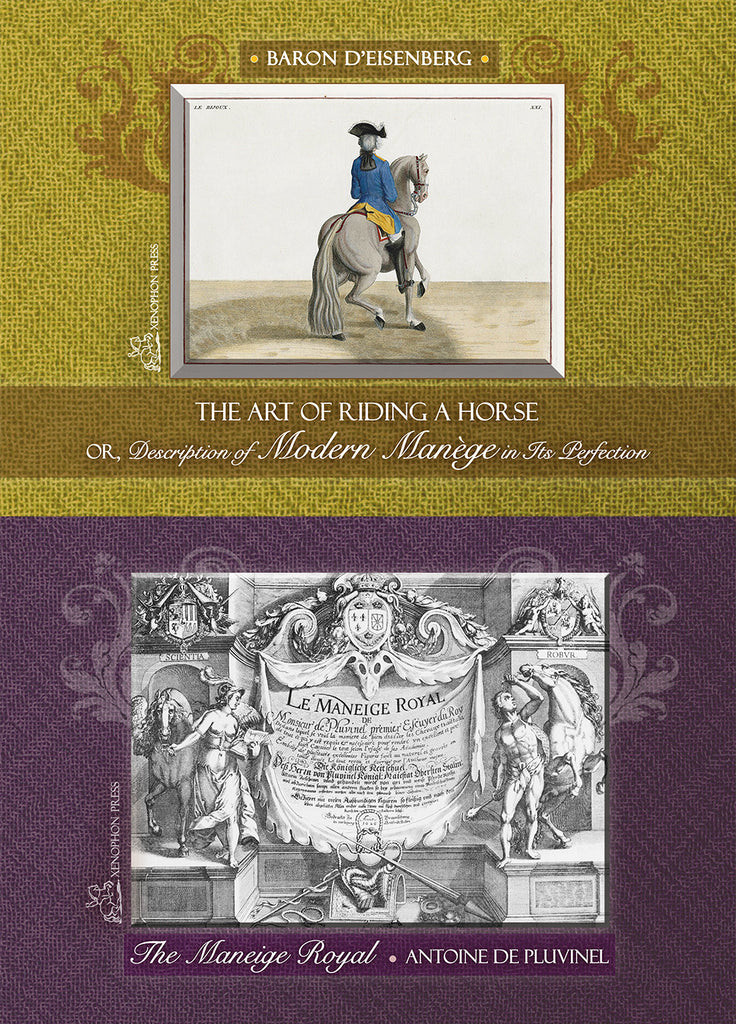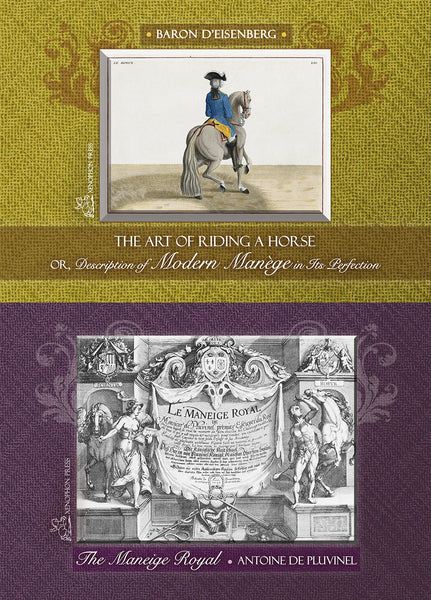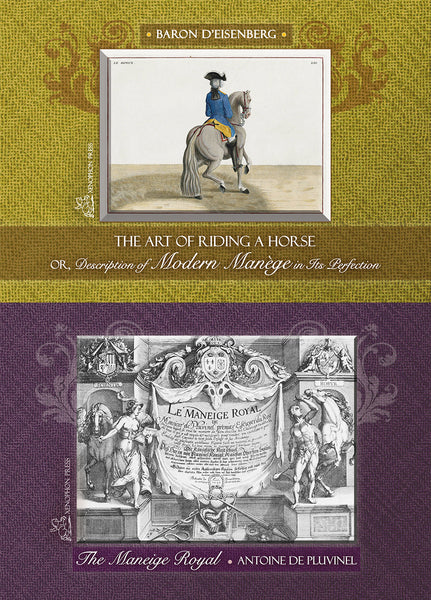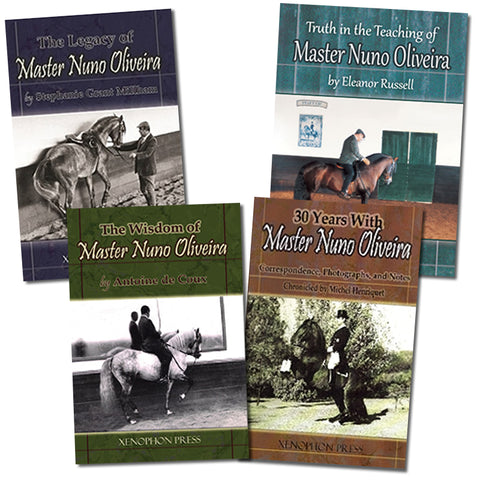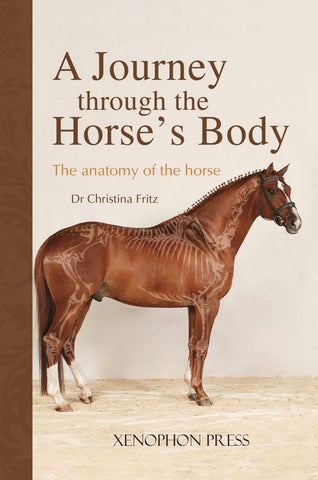"Maneige Royal" and "Modern Manege" SAVINGS BUNDLE
SAVE $20 off the retail price when you purchase these two remarkable, historical and relevent texts
First Book:
The Art of Riding a Horse or Description of Modern Manege in all Its Perfection 1727.
This book is likely to create a small revolution in the way we ride and train horse for supple collection. Each exercise is described succinctly with an accompanying diagram beautifully engraved.
A contemporary of de la Gueriniere, Eisenberg was trained in the European Royal riding academies including the Viennese Spanish Riding school under Regenthal. Eisenberg is prominently featured in Koert van der Horst's Great Books on Horsemanship with over 8 pages of coverage.
Never before has this material been available in English.
Riders always seem to want two things to help them in their training: 1. A visual concept of what they are trying to attain, and 2. simple instructions that will give them results. Baron D'Eisenberg's Art of Riding a Horseprovides today's riders with both elements in easy to follow instructions for riding and training horses to the highest levels of equitation, and, with lovely engravings of horses and riders demonstrating the movements as performed to perfection. This book is a must have for any student of high level equitation. It will also be a treasure for the novice rider who wants to set their sights on the ideal images and descriptions of correctly schooled, beautiful horses in noble performance.
Second Book:
Le Maneige Royal 1626, takes the form of a dialogue between master and pupil. The Master, de Pluvinel and the Pupil, the Dauphin. This work describes not only the progress of the royal pupil but also de Pluvinel’s desire to develop a more humane approach to training horses. His bits and spurs are considerably modified when compared to those of his predecessors. In this respect, the influence of de Pluvinel is most clearly reflected, in terms of English masters, in the difference between the last considerable master before his day—Blundeville—and the first after him—The Duke of Newcastle. Much barbarity had been shed in the interval which was filled by de Pluvinel’s teaching. Among other things, de Pluvinel was the first riding master to describe all of the High School movements and aids, and is believed to have been the first to use pillars for training horses.
Both books are 8.5" high x 11" wide with adhered hardback covers.

